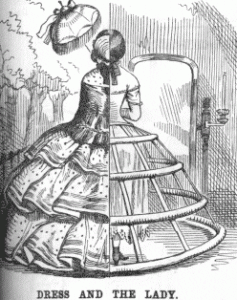Atypical “Attitudes Towards Prostitution”
A practice many would think is far beyond moral taboo for 19th Century London women actually received varying views. One anomalous opinion was written in The London Times in 1858 which expressed that call girls of the day were merely “practising their trade, either as the entire or partial means of their subsistence.” This writer views prostitution as any other occupation, which is fascinating for a time when women weren’t technically even ‘supposed’ to have jobs. The notion that women who practice prostitution are morally wicked is another common view not held by this author. He writes, “they have their virtues, like others; they are good daughters, good sisters, and friends.” In short, the author sees prostitution as a job like any other, one in which a woman can find not only means for subsistence but she can find success.
“Causes of Prostitution”
Another article published in The London Times is written from a different and woman’s perspective. This one was written by a woman who feels unsettled with the limitations on which women can know or offer suggestion about a troubling occurrence in a society. That a woman should not only stray from the practice but not even acknowledge such a topic, for she should not know of such things, that she should ignore and not ask questions: “We have been told heretofore by men whom we respect that it becomes a woman to be absolutely silent on such revolting topics – to ignore, or rather to affect to ignore, such a ‘state of things’ as you allude.” In this passage, prostitutes are referred to (by the woman) “outcasts of our own sex.” All other women are referred to as “virtuous women”, and the writer refers to herself as the latter. The writer sees this topic as one that affects all members of the gender and seems to be deeply concerned. Her view is probably leaning towards the typical view of the time, because she thinks of them as “wretches whose sole and profitable occupation is to hunt down and ensnare victims…” Men are referred to as ‘victims’ of prostitution. So the woman conforms to the gender norms in society that everything morally incorrect is at the fault of women more than at the fault of men, though both deserve equal blame (Adam and Eve and the Forbidden Fruit being the prime example. She even mentions the Bible and Christianity a couple times in her ramble.)
Summary
We have two opinions, one ironically written by a man with outlandish views and one by a woman who conforms to what was seen as acceptable in her society. The articles in this section all prove the idea discussed in class that the issues and topics of Victorian times are virtually no different than those of modern times.
– Miranda Delancey, Online Assignment #1




































